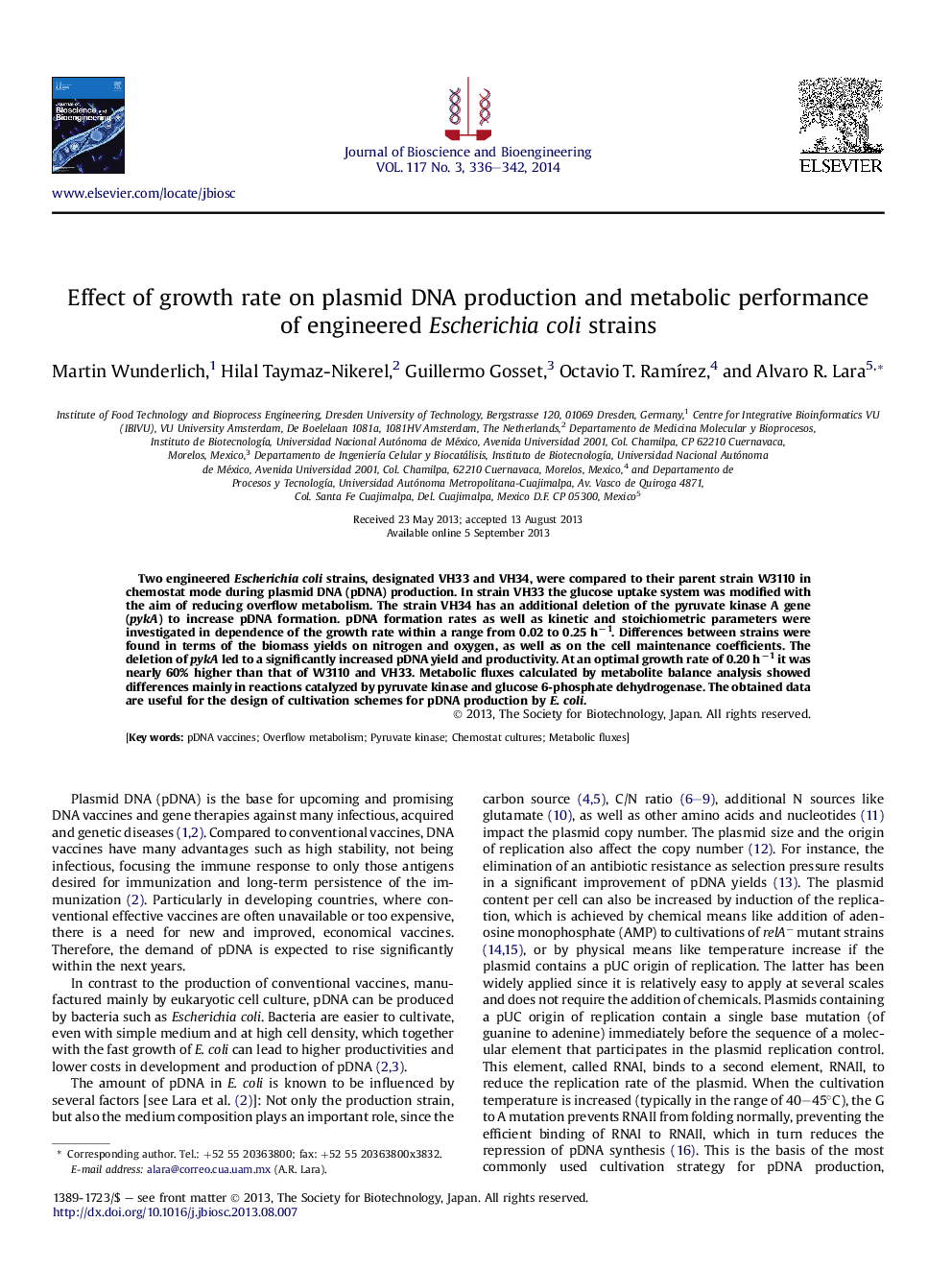| Article ID | Journal | Published Year | Pages | File Type |
|---|---|---|---|---|
| 20602 | Journal of Bioscience and Bioengineering | 2014 | 7 Pages |
Two engineered Escherichia coli strains, designated VH33 and VH34, were compared to their parent strain W3110 in chemostat mode during plasmid DNA (pDNA) production. In strain VH33 the glucose uptake system was modified with the aim of reducing overflow metabolism. The strain VH34 has an additional deletion of the pyruvate kinase A gene (pykA) to increase pDNA formation. pDNA formation rates as well as kinetic and stoichiometric parameters were investigated in dependence of the growth rate within a range from 0.02 to 0.25 h−1. Differences between strains were found in terms of the biomass yields on nitrogen and oxygen, as well as on the cell maintenance coefficients. The deletion of pykA led to a significantly increased pDNA yield and productivity. At an optimal growth rate of 0.20 h−1 it was nearly 60% higher than that of W3110 and VH33. Metabolic fluxes calculated by metabolite balance analysis showed differences mainly in reactions catalyzed by pyruvate kinase and glucose 6-phosphate dehydrogenase. The obtained data are useful for the design of cultivation schemes for pDNA production by E. coli.
